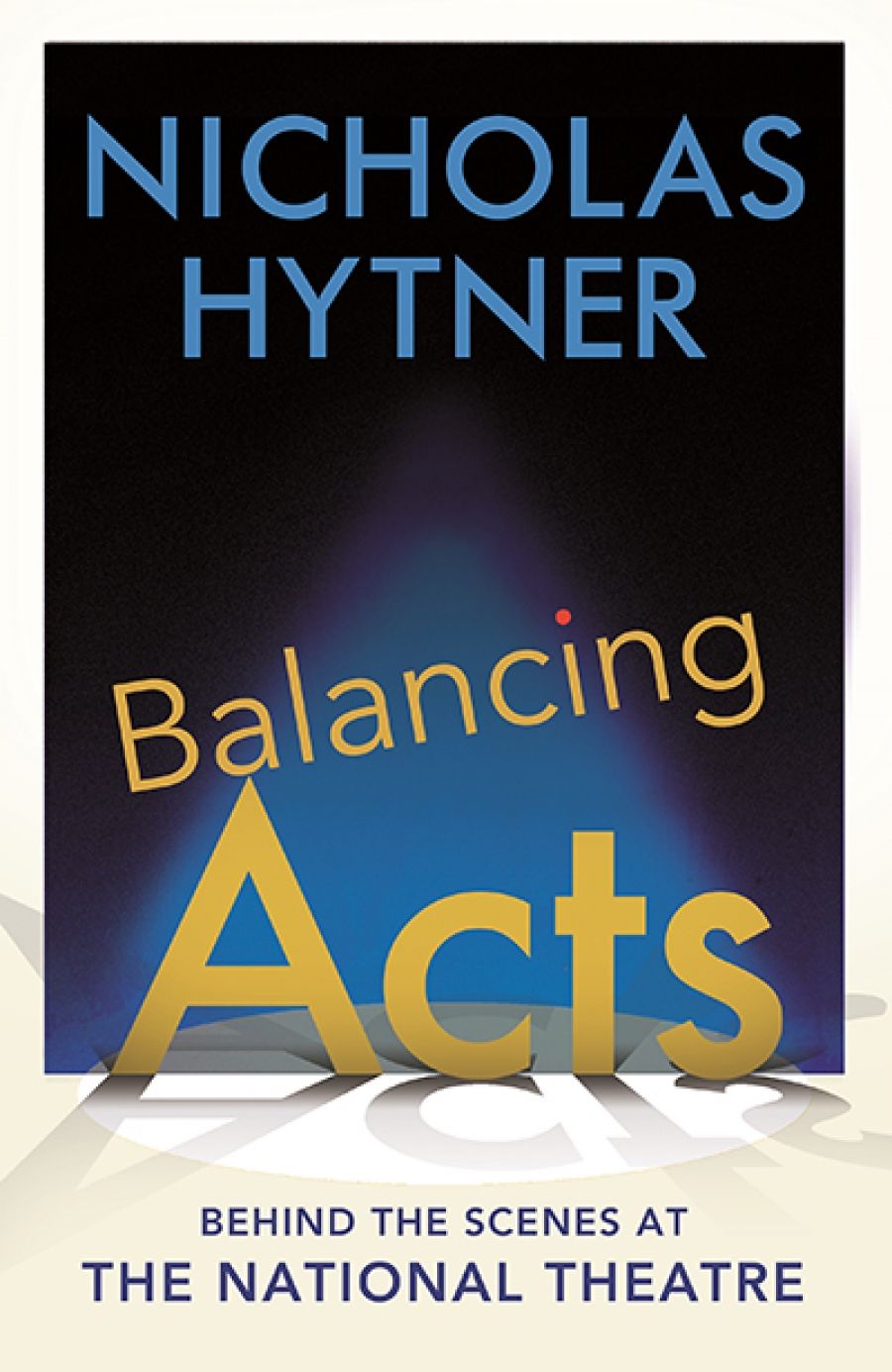
- Free Article: No
- Contents Category: Theatre
- Custom Article Title: Brian McFarlane reviews 'Balancing Acts: Behind the scenes at the National Theatre' by Nicholas Hytner
- Custom Highlight Text:
One of the most appropriate titles since Pride and Prejudice, Balancing Acts adroitly captures the drama and appeal of Nicholas Hytner’s account of his twelve years as director of London’s National Theatre. There have been several different takes on this often-controversial site of some of the world’s most riveting theatrical fare ...
- Book 1 Title: Balancing Acts
- Book 1 Subtitle: Behind the scenes at the National Theatre
- Book 1 Biblio: Jonathan Cape, $49.99 hb, 320 pp, 9781910702895
It is worth noting some of those eponymous tensions and their resolutions. As director, Hytner was always aware of the need to balance the claims of artistry against those of healthy profits. As he says, when trying ‘to juggle substance with pleasure’, ‘Like the Elizabethan players, who rubbed shoulders with the bear pits and the brothels, we are part of the Entertainment Industry.’ Shakespeare was of course to be essential to the repertory, as were other classics, but Hytner knew that new plays, such as The History Boys, or large-scale musicals, or daringly different pieces like War Horse, would also be jostling for places alongside these illustrious predecessors if an eclectic ticket-buying public was to be maintained in sufficient numbers.
Within individual productions, the preoccupation with ‘balance’ again made itself felt. Sometimes, as with the Timon of Athens, he sought to juggle what the play had to say about wealth in James I’s Britain (nothing to do with Athens, he claims) and its potential significance in light of present-day financial dealings. Hytner writes: ‘... it would have taken a theatrical imagination much less opportunistic than mine not to recognise in it a satirical image of fat-cat twenty-first century London’. With Hamlet, he is aware of its resonance with highly developed spy networks in later periods; in the Henry IV plays he finds potent echoes of contemporary divisions between town and country, North and South, Scotland and England.
Alert to the possible, even vital, balance to be struck between then and now, Hytner is sufficiently self-critical to note when working on Henry V that, though gaining a ‘vivid impression that Shakespeare was writing for us now’, the company had lost ‘the indisputable truth that Shakespeare was writing for his own audience, then’. Without self-aggrandisement, he can deal equally with his own aspirations, challenging as they so often are, and with what he conceives to be an error of judgement.
 Nicholas Hytner (photograph by Johan Persson)One of the major rewards of the book is the way Hytner takes the reader through the processes of play selection, the rehearsal room, the details of staging, and the opening night. He can lead us to gratifying recall of plays we have seen and to making us wish we’d seen those we hadn’t. For reasons now unclear, I never saw either War Horse or One Man, Two Guv’nors. Reading Hytner’s accounts of how these two hugely popular productions came together – from initial creative sparks to opening-night sensations – I can’t adequately express my regret. The evocative detail with which he brings these to light on the page – or how Danny Boyle’s production of Frankenstein, rotated the actors playing the creature and his creator – is rare in writing about theatrical performance.
Nicholas Hytner (photograph by Johan Persson)One of the major rewards of the book is the way Hytner takes the reader through the processes of play selection, the rehearsal room, the details of staging, and the opening night. He can lead us to gratifying recall of plays we have seen and to making us wish we’d seen those we hadn’t. For reasons now unclear, I never saw either War Horse or One Man, Two Guv’nors. Reading Hytner’s accounts of how these two hugely popular productions came together – from initial creative sparks to opening-night sensations – I can’t adequately express my regret. The evocative detail with which he brings these to light on the page – or how Danny Boyle’s production of Frankenstein, rotated the actors playing the creature and his creator – is rare in writing about theatrical performance.
Throughout, there is a strongly felt purpose in regard to what the National Theatre means – and it is ‘national’ as well as ‘theatre’. Hytner expresses an ongoing sense of responsibility to those involved, whether creative personnel or management, as well as to the audiences. He can have reservations about an aspect of an actor’s response to a role, but these do not lead to waspish put-downs, and he is aware of how audiences’ tastes change and of their wish for varied fare. Some plays may chime with the national ethos of the moment and will be noticed for this; others may play to nostalgic longings, but they need to have more going for them than that, as he finds in the staging of his favourite musical, Carousel.
One of the recurring pleasures of this book is the emergence of other key figures in the National’s history during Hytner’s incumbency. Playwrights such as Alan Bennett and David Hare, actors such as Rory Kinnear and Simon Russell Beale (two of the most revered Hamlets of recent times) are caught with precision and generosity. There is also an engaging anecdote about Maggie Smith, cast to play Lady Bracknell, and persuading Hytner to join her at lunch chez John Gielgud to hear about how Edith Evans dealt with this ‘supporting role’.
In the book’s last ‘impossible balancing act’, Hytner writes of how he was spurred ‘by the contradictory ambition to make theatre for the privileged few on the night, and to spread that privilege as widely as possible’. Those readers who so enjoy the resulting National Theatre Live presentations in cinemas today will have a field day with this book.


Comments powered by CComment